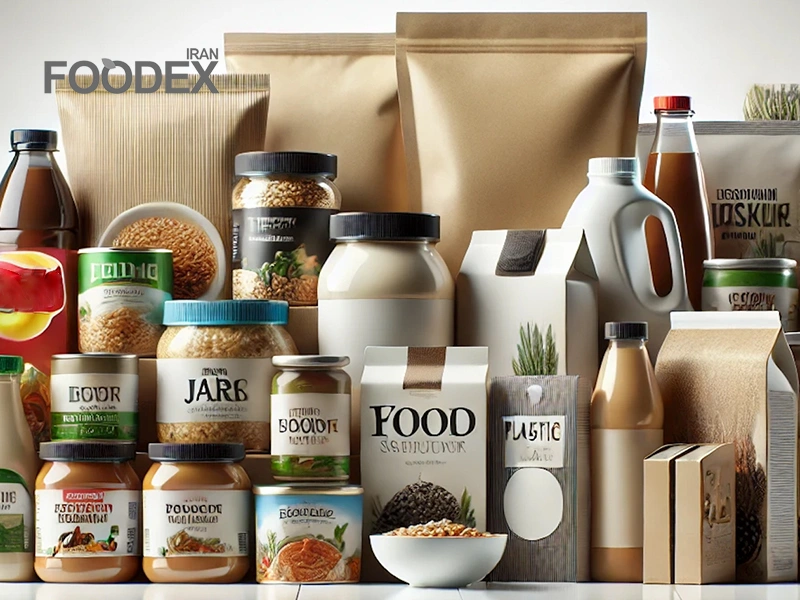The food and beverage industry continuously throws new products into the market to position itself and attract new consumers. But have you ever thought that these new products may be eating away at the sales of your other existing products instead of increasing your share in the market? Such a phenomenon, called cannibalization, is a critical challenge that directly impinges on any business’s growth and profitability.
The article discusses the phenomenon, examines its causes, articulates powerful strategies for proper management, and emphasizes minimizing its negative impacts. If you are eager to learn more about product strategy management in the food industry, proceed with the topic in greater detail.
What is Cannibalization?
The term cannibalization refers to a managerial situation where a company’s introduction of a new product reduces either sales or market share of one of its existing products. This usually occurs in a situation where new products attract old customers rather than attracting new customers.
The History and Origin of Cannibalization
The cannibalization idea has been recognized for several years. As the companies continuously increased their product portfolios, they observed that sales of old products were being reduced. When competition within a company increased, this concept of cannibalization was also considered crucial.
Difference Between Cannibalization and Internal Competition
Although cannibalization sounds similar, it is an entirely different concept. A product is considered to facilitate market competition if it competes with all the other products within the company. These together improve the overall Cannibalization. Time refers to a decrease in the revenue sales experienced by an older item when a new product pops into the frame.
The Importance of Cannibalization in the Food and Beverage Industry
The food and beverage industry is a dynamic area that constantly changes consumer needs and preferences. Preferences. Creating new products becomes important too often in this sector, and it also presents challenges such as a lack of innovation. Only understanding this phenomenon has an adverse impact and finds growth opportunities.
Unique Characteristics of the Food and Beverage Industry
This industry is highly dynamic due to daily consumption patterns and the rapid evolution of consumer preferences. Companies frequently launch new products to meet the diverse needs of their customers.
Shifts in Consumer Preferences
Modern consumers increasingly demand variety, quality, and healthier options. These evolving preferences push companies to expand their offerings, which often results in cannibalization.
The Need for Innovation and Product Development
Innovation in food and beverage products is critical for capturing customer interest and maintaining competitiveness. However, it may inadvertently reduce existing product sales, leading to cannibalization.
Geographical Indications
Guide to GI CertificationsCauses of Cannibalization in the Food and Beverage Industry
Understanding the causes of cannibalization can help businesses effectively take measures to minimize negative impacts.
Overlap in Target Market: Cannibalization mainly occurs when a new product is targeted at the same audience as an existing product.
Improper Pricing: Customers unintentionally cannibalize other products, even at a lower profit margin, when a new product is priced incorrectly.
Poor Differentiation of Products: When new products are not different from existing ones, customers simply replace their old ones with new ones.
Rapid New Product Development: The introduction of new products at a breakneck pace, without proper market analysis, can result in severe declines in existing product sales.
Competitive Strategies: An excessive focus on rivalry might sometimes blind a company to the impact of new products on its existing products.
Dimensions of Cannibalization
Recognizing the various dimensions of cannibalization is crucial for evaluating and managing its effects:
Financial Dimensions: Cannibalization can directly impact profitability if the new product has lower profit margins. Additionally, the costs of developing and marketing the new product might not yield adequate returns, resulting in wasted resources.
Marketing Dimensions: Overly similar products can confuse consumers and diminish brand loyalty. Conflicting marketing messages between old and new products may weaken the brand’s position in consumers’ minds.
Operational Dimensions: Introducing new products can complicate supply chains and resource management. If new products are not well-aligned with existing systems, they can increase costs and reduce efficiency.
Frameworks and Models for Analyzing Cannibalization
Businesses can leverage analytical models and tools to understand and manage cannibalization better. These frameworks help predict and control the impact of new products on existing ones, providing an effective practice for strategic decision-making:
Boston Consulting Group Matrix (BCG Matrix)
The BCG Matrix is a key analytical tool for managing product portfolios. It classifies products into four categories based on market growth rate and relative market share, helping companies allocate resources to high-performing products and eliminate low-performing or unprofitable ones:
Stars: Products with high market share and high growth. These require substantial investment.
Cash Cows: Products with high market share but low growth. These generate stable cash flow.
Question Marks: These are products with low market share but high growth. They require detailed analysis to determine whether to invest further in them or discontinue them.
Dogs: Products with low market share and low growth. These are often low-profit or loss-making and may need to be removed.
Example: Consider the product portfolio of a hypothetical company, “Healthy Dairy”:
Low-fat milk (Star): High market share and high growth.
Greek yogurt (Cash Cow): High market share but low growth.
New flavoured milk (Question Mark): Low market share but high growth potential.
Old buttermilk product (Dog): Low market share and low growth.
Ansoff Matrix
The Ansoff Matrix is a valuable tool for identifying growth strategies. It helps design new products in a way that minimizes their impact on existing ones by analyzing risks. The matrix categorizes growth strategies into four areas:
Market Penetration: Increasing sales of existing products in current markets.
Market Development: Introducing existing products to new markets.
Product Development: Launching new products in existing markets.
Diversification: Developing new products for new markets.
These frameworks enable businesses to analyze risks and optimize their strategies for growth while reducing the likelihood of cannibalization.
Cost-Benefit Analysis
The cost-benefit analysis allows businesses to compare the expenses of producing new products to their potential benefits. For instance, if the projected profit of a new product is less than the reduction in sales of an existing product, launching the new product would not be advisable.
Example: A hypothetical company, Delightful Sweets, plans to launch a low-sugar dessert. The analysis shows that the profit from the new product will be less than the loss in sales of its existing dessert line. This benefit analysis helps companies make more informed decisions about introducing new products.
Product Life Cycle Model
This model examines the various stages of a product’s life cycle (introduction, growth, maturity, and decline):
Introduction: The product has been launched in the market.
Growth: Sales and market share increase.
Maturity: Growth slows, and sales stabilize.
Decline: Demand and sales decrease.
Companies can use this analysis to determine the optimal time to introduce new products and avoid overlapping them with existing ones.
Green Marketing & Greenwashing in the Food Industry
Learn MoreMarket Segmentation Analysis
Market segmentation analysis helps businesses identify product competition customer groups and tailor their products to target specific segments. This approach minimizes market overlap and prevents competition between products.
Example: A hypothetical company, Healthy Foods, launches a new product targeting athletes while its existing products are marketed to families. This segmentation ensures that the products cater to distinct customer bases.
Product Differentiation Analysis
Creating clear distinctions between products—such as flavflavourckaflavour or functional features—is an effective solution. Differentiated products give consumers more substantial reasons to choose one over the other.
Example: A chip manufacturer could offer a new product with distinctive packaging to target a new customer segment.
Strategic Pricing Models
Adjusting pricing to prevent internal competition between products is a crucial strategy. For example, pricing the new product at a higher level can target a specific niche and preserve the existing product sales.
Equity Analysis
This analysis evaluates the impact of new products on customer loyalty and overall brand value. If new products undermine the brand’s equity, the company may face significant challenges.
Examples of Cannibalization in Food Industry Businesses
Understanding cannibalization can be challenging without tangible examples. Below are hypothetical scenarios demonstrating how new products can reduce sales of existing products, making the concept more relatable:
Example 1: Launching a New Energy Drink
CoCool Beverages introduced new energy drinks. Due to their similar, comparable pricing, this new product reduced sales of the company’s existing carbonated soft drinks by 20%.
Analysis: Reason for Cannibalization: Overlap in the target market and insufficient product differentiation.
Solution: Create unique features for the energy drink and target different market segments.
Example 2: Offering a Low-Sugar Version of a Dessert
The company “Sweet Treats” launches a low-sugar version of its popular cake. Due to its health-focused features, this product attracts customers and reduces sales of the original version.
Reason for Cannibalization: Overlap in customer groups and similar pricing.
Solution: Target health-conscious customers with differentiated pricing and separate advertising campaigns for each product.
Example 3: Expanding with Plant-Based Products
The company “Protein Foods” introduces plant-based products to the market, reducing its meat-based products’ sales:
Reason for Cannibalization: Shifting customer preferences without brand separation.
Solution: Use distinct branding for plant-based and meat-based products to prevent overlap.
Example 4: Changing Product Packaging and Sizes
The company “Healthy SnacHealthy Snacks” launches packaging. This move reduces larger family-sized packages.
Reason for Cannibalization: Misaligned pricing and lack of customer need analysis.
Solution: Offer diverse packaging options with strategic pricing to target different customer groups.
Example 5: Introducing New Flavors in a Chip Product Line
The company “Crispy Chips” launched new flavours in its chip product line. This introduction significantly reduces sales of its classic flavours:
Reason for Cannibalization: Lack of sufficient differentiation in marketing and product positioning.
Solution: Highlight the unique features of the new flavours and separate marketing campaigns for each taste.
Strategies for Managing and Reducing Cannibalization
Managing cannibalization is one of the key challenges for businesses in the food and beverage industry. It requires a strategic approach to minimize the negative impact of new products on the sales of existing ones. Below are practical strategies to help businesses tackle this phenomenon and maintain profitability:
1. Conducting Thorough Market Analysis and Understanding Customer Needs
Understanding customer needs and behaviours is the first step in avoiding overlap between new and existing products. If new products meet the actual market, the likelihood of cannibalization decreases.
How to achieve this?
Market Research: Use tools like surveys, interviews, and sales data to understand customer preferences.
Analyzing Purchase Behaviors: Examine customer purchasing patterns to target different market segments effectively.
2. Product Differentiation and Innovation
Unique products that address new needs reduce the likelihood of replacing older products. Design, packaging, or functionality innovations can make new products more attractive.
How to achieve this?
Focus on Unique Features: Offer products with clear and distinct advantages.
Innovative Design: Leverage new technologies or creative approaches in product design.
3. Market Segmentation and Targeted Marketing
Segmenting the market allows businesses to tailor their products for specific customer groups. This approach helps prevent internal competition between products.
How to achieve this?
Identify Niche Markets: Target new or less competitive markets for new products.
Distinct Marketing Strategies: Design tailored campaigns for each customer group.
4. Smart Pricing Strategies
Appropriate pricing can guide customer purchase behaviour, ensuring that products do not compete against each other.
How to achieve this?
Discriminatory Pricing: Set prices for new products based on their perceived value and target market.
Value-Based Pricing: Adjust prices to align with customers’ perceptions of product worth.
5. Separate Brands or Sub-Brands
Differentiating product branding prevents direct competition, and the product appeals to its target market.
How to achieve this?
Create Sub-Brands: Develop separate brands or sub-brands for new products.
Independent Marketing: Implement distinct promotional strategies for each brand.
6. Planned Product Replacement
Gradually phasing out older products and replacing them with new ones can help manage cannibalization in a controlled manner.
How to achieve this?
Gradual Elimination: Slowly reduce the availability of older products, allowing customers to transition to new ones.
Phased Introduction of New Products: Use trial or step-by-step marketing to introduce new products.
7. Effective Communication and Customer Feedback
Engaging with customers and collecting feedback helps improve product design and avoid internal competition.
How to achieve this?
Surveys and Interviews: Gather direct insights from customers.
Social Media Interaction: Use platforms to connect with customers and analyze their feedback.
Practical Recommendations for Food Business Owners
Invest in Research and Development (R&D): Focus on developing products that meet customer needs.
Utilize Data and Market Analytics: Leverage data to predict the impact of new products on existing ones, enabling better decision-making.
Train the Marketing Team: Ensure the marketing team understands the concept of cannibalization and can implement appropriate strategies.
Flexibility in Strategies: Adapt strategies based on feedback and changing market conditions.
Collaborate with Partners and Suppliers: Effective supply chain collaboration can enhance resource management and reduce costs.
How Top Food Brands Boost Engagement
Digital Marketing StrategiesA Fresh Perspective on Managing Cannibalization in the Food Industry
Cannibalization is an unavoidable challenge in innovation and developing new products in the food and beverage industries. By thoroughly understanding this phenomenon, analyzing its causes, and employing management strategies, it is possible to minimize its negative impacts and even transform this challenge into an opportunity for growth.
To succeed in this endeavour, it is essential to focus on real customer needs, differentiate products, use analytical tools, and maintain market engagement. The more attention your business pays to these aspects, the better prepared it will be to adapt to changes.
This will position your company to handle market dynamics more effectively and turn potential threats into opportunities for sustainable growth.
FAQ
What is cannibalization?
Cannibalization is a phenomenon where a new product reduces the sales or market share of a company’s existing products.
Why is cannibalization important in the food and beverage industry?
Because introducing new products is essential for competition and attracting customers, but it may negatively impact the sales of current products and profitability.
How can cannibalization be managed?
By conducting thorough market analysis, differentiating products, implementing smart pricing strategies, and targeting the market precisely.
References
Kotler, P., & Keller, K. L. (2016). Marketing Management. Pearson
Ansoff, H. I. (1957). Strategies for diversification. Harvard Business Review
Boston Consulting Group. (1970). The product portfolio. BCG Perspectives
Porter, M. E. (1985). Competitive Advantage: Creating and Sustaining Superior Performance. Free Press
Levitt, T. (1965). Exploit the product life cycle. Harvard Business Review
Euromonitor International. (2020). Global food and beverage industry trends
Nielsen. (2019). Understanding cannibalization in product portfolios
McKinsey & Company. (2018). How to manage product cannibalization
Deloitte. (2017). Navigating the new food and beverage landscape
Day, G. S. (1981). The product life cycle: Analysis and applications issues. Journal of Marketing
Author
Hojat Azin
Food & Beverage Marketing Specialist

























